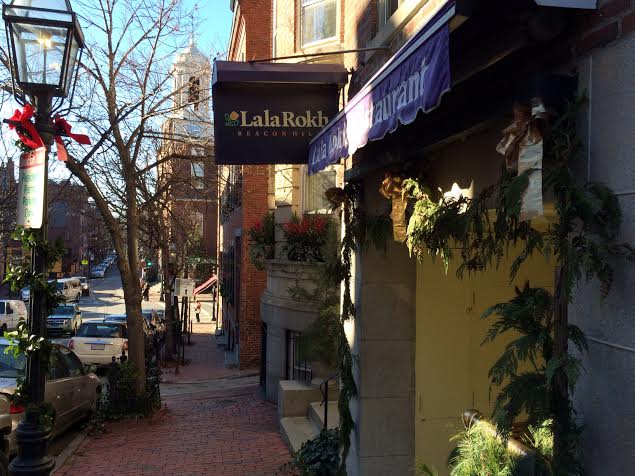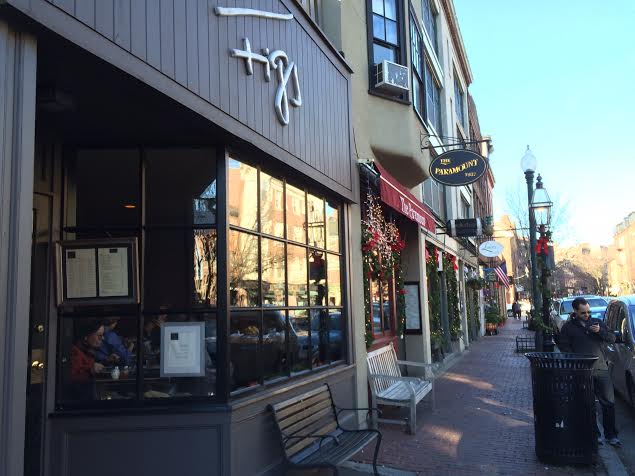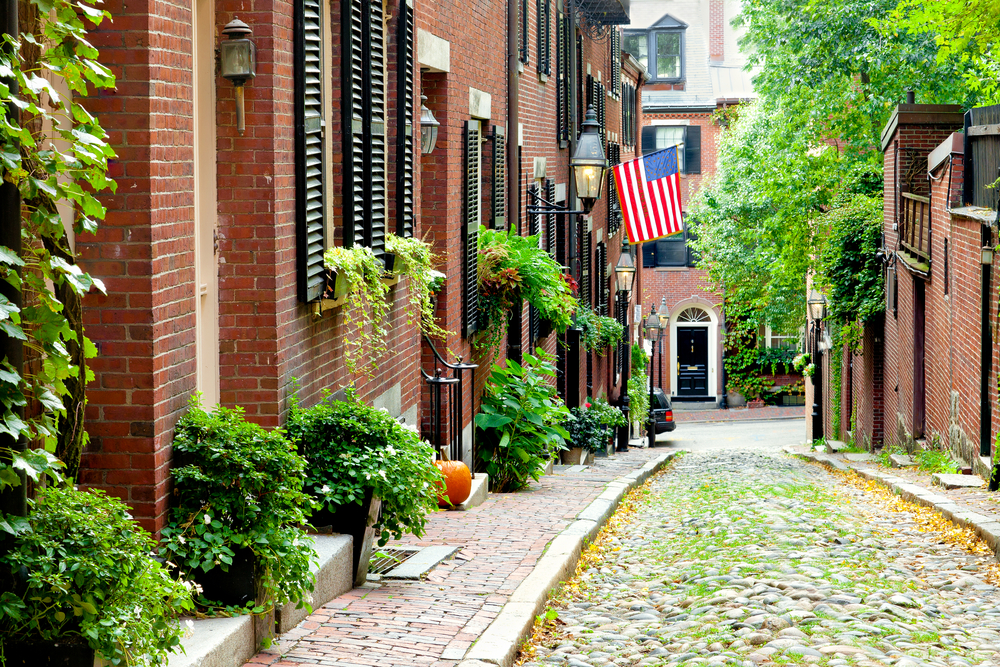Can you remember the last time you ventured out on a Beacon Hill restaurant rendezvous?
Neither can we. Which got us thinking: why is one of Boston’s most historic neighborhoods – with its beautiful iron work, red-brick rowhouses, gas-lit cobblestone streets and wealthy residents – somehow devoid of a booming restaurant scene?
“There are three to four times the amount of people in the South End, Somerville, Cambridge or Brookline.”
Don’t get me wrong. I love The Paramount’s brunch as much as the next person. But Beacon Hill’s overall dining arena has simply grown stale with Bostonians, especially millennials. While other areas like Inman Square and Fort Point have continued to emerge and evolve as serious restaurant hubs, Beacon Hill has sadly been left in the dust. A few restaurant magnets do exist – Lala Rokh, 75 Chestnut and of course, who could forget Todd English’s Figs? (If it’s even still open.)

Aside from several established anchor restaurants and the occasional Starbucks (or two) on Charles Street, this National Historic Landmark District just doesn’t have the restaurant playground needed to attract other Boston-area residents.
So why, when it comes to our city’s most charming area, are we left scratching our heads, wondering where to eat?
The answer is that the historic Beacon Hill neighborhood simply isn’t conducive to restaurants. Or as Jonathan Martin, vice president of Colliers International, explains, it’s “a combination of physical constraints, vocal and engaged residents, and emerging submarkets elsewhere in metro Boston that make Beacon Hill a tough place for restaurants to open.”
“Several operators that we work with don’t consider Beacon Hill an option for expansion because of the lack of density,” Martin tells me. “There are three to four times the amount of people in the South End, Somerville, Cambridge or Brookline.”
Right now, Beacon Hill is comprised of roughly 9,000 residents, according to 2010 Census data and 2007-2011 American Community Survey data, provided by the BRA. To put that in perspective, the South End is home to roughly 25,000 people. Back Bay has roughly 18,000 residents. Overall, Beacon Hill is one of the least dense neighborhoods in the Boston-area. So, while a restaurant on Charles Street may get plenty of foot traffic, the side street eateries tend to be more resident-oriented. But that seems to be exactly how these neighborhood residents like it.

“Most of the operators are successful because of the loyal local residential crowd as well as Suffolk and State House workers, to a lesser extent,” Martin explains. “Today, prospective restaurateurs are looking for the millennials, where the foot traffic is.”
And given the neighborhood’s high rents and average per capita income of $69K, we gather that Beacon Hill’s young residents can also afford to take an Uber to Boston’s restaurant hot spots. The neighborhood is simply not a restaurant destination for the Hub’s millennial crowd.
But even if it was, potential restaurants would have a tough time finding the right space. In terms of regulatory hurdles, Ed Doyle, president of Real Food Consulting, tells me that “real estate is in tight supply in Beacon Hill and the community groups are very involved in any zoning, so changing a non-restaurant space is difficult.” (As is evident by this construction debacle last year.)
And, as Martin points out, the restaurant space itself doesn’t become available very often. “Because Beacon Hill is a small, quaint neighborhood, the local businesses don’t turn over as much, so there aren’t many opportunities that come to market. There are several more commercial, and specifically restaurant locations in the Fenway or South End so the turnover happens naturally.”
But lack of real estate isn’t the only issue. High rents play a role as well. “We just completed a market study for a client space on Cambridge St.,” Doyle tells us. “The data on pedestrian traffic, the challenges of zoning and the rent expense led us to advise our client to look elsewhere.”
Doyle adds that while “real estate availability, rents, zoning are all issues for any restaurant, they seem to be of greater burden in Beacon Hill.”

As for the space that is available, it’s simply not conducive for running a restaurant in 2014. “Due to the lack of supply and physical constraints of many of the properties along Charles Street – no outdoor seating, lack of frontage, etc. – commercial rents for quality space are prohibitively high for many restaurant operators,” Martin notes.
In addition to the high rents, the lack of accessibility ramps at entrances could be hindering restaurant prospects – as many of these historic buildings may not meet certain ADA (Americans With Disabilities Act) accessibility standards. But this is changing due to a recent push by Mayor Marty Walsh to make the streets of Beacon Hill more compliant.
Other deterrents for potential restaurateurs are the strict regulations imposed by the neighborhood. Everything from the historic district’s architecture to a restaurant’s signage is decided upon by neighborhood groups like the Beacon Hill Civic Association.
“There has always been a push/pull in Beacon Hill over signage,” Martin tells me. “But restaurateurs have several options today, all over Boston. Many options to expand are in areas like the Seaport, North Station and Fenway, where the signage is less stringent. The historic nature of Beacon Hill means you can forget backlit signage; the regulations from the community are more stringent than anywhere in the city.”
Boston Globe columnist Lawrence Harmon even points out, “Beacon Hill homeowners can’t so much as choose mortar for exterior repairs without adhering to the guidelines of a state-created architectural commission.”

So, what (if any) kind of restaurants are actually suited for this historic neighborhood? Well, just look around. “Beacon Hill has a core base of residential, which would lead us to see a ‘neighborhood’ style restaurant that would present good value, high quality and creative cuisine,” Doyle answers.
In the end, what makes Beacon Hill so wonderful – its aesthetics and quaintness – is also what makes it so difficult to open a restaurant.
Feature image via Shutterstock; all other images via author


